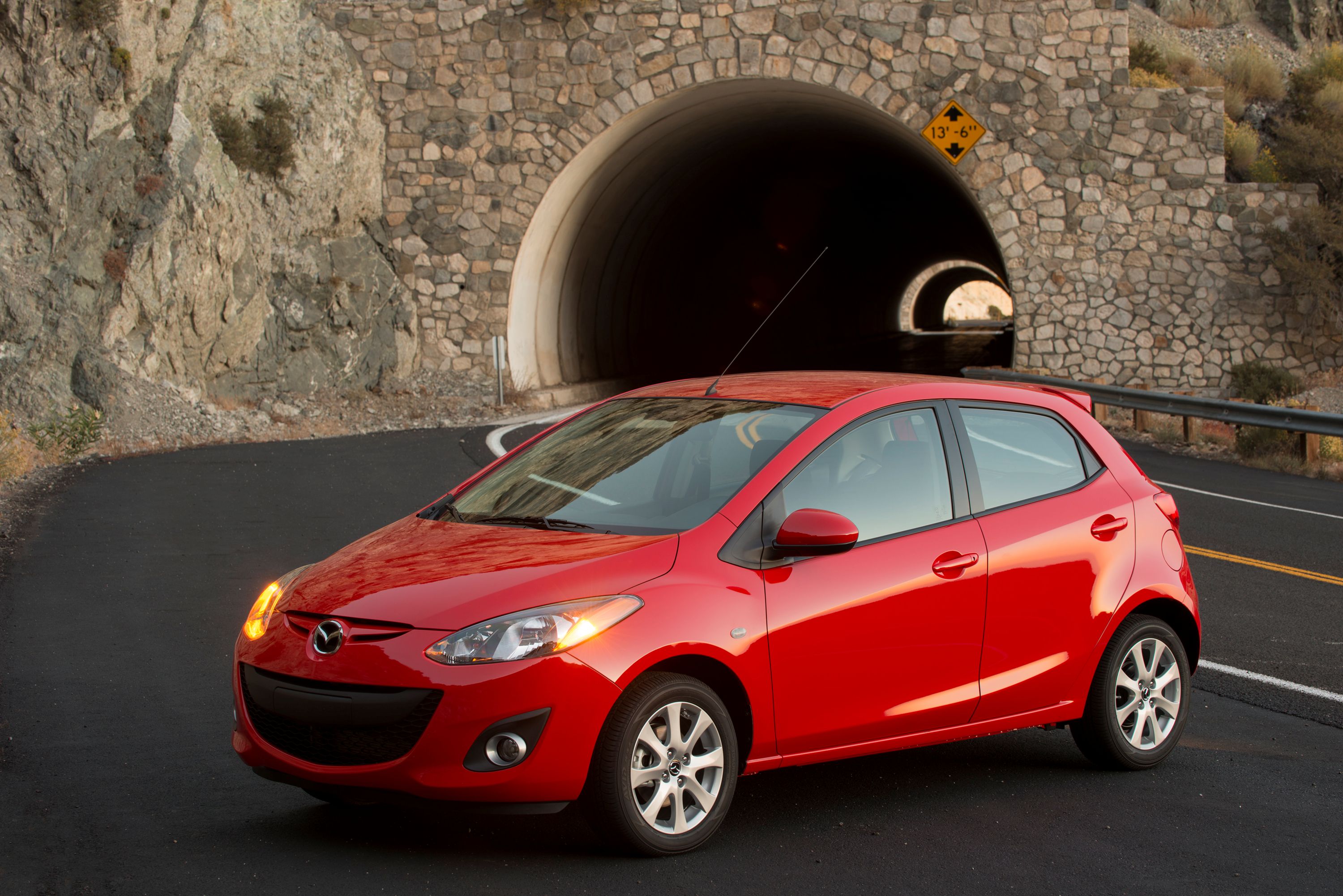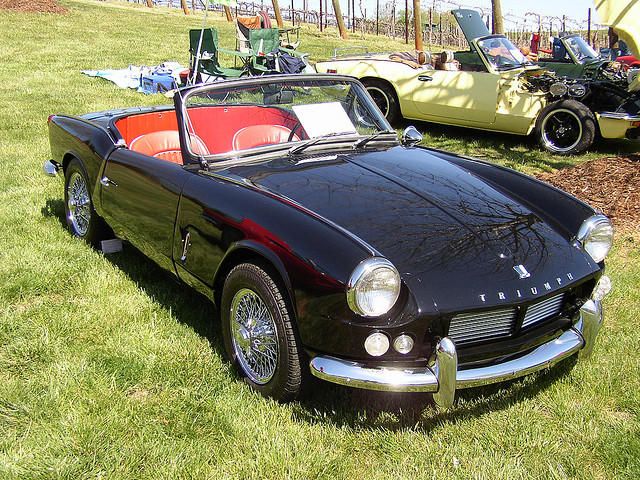
Many different countries make roadsters these days, but the truly classic roadster is British. It is also small, front-engine and rear-wheel-drive. The early Sixties saw several such roadsters introduced, but the most enduringly classic of all is also the one with the most colorfully British name, the Triumph Spitfire. It is a name which you cannot ever hear without thinking of tweed, but the car was also popular in the US, and it is one of the most successful roadsters of all time, along with the MGB, until both were vastly overshadowed by the Mazda Miata/MX-5.
The Spitfire wasn't the first roadster in the sense that we think of them, and neither was it even the first mass-market British roadster. The car which should really get the credit for starting the roadster trend is the Austin-Healey Sprite. But the Sprite, at least the early "bug-eye" Sprites, didn't have nearly as classic a roadster look to them, and neither did they sell even half as many as Triumph sold of the Spitfire. The story of the Spitfire is one of the great car development stories out there. Triumph was planning a whole new line of smaller cars in the late Fifties, and one of the most important of these was a competitor to the Sprite.
Triumph came up with the idea to base it off of a shortened version of the chassis used for the Herald small sedan, thus keeping costs down. An Italian by the name of Michelotti drew up the design for the new roadster, and it is at least as attractive as the body penned by Pininfarina for the Alfa Romeo Spider a few years later (more on that later in this series). It was an ambitious project, but by the early days of the Sixties, Triumph was deep in the red, and the project was shelved. Leyland took over the company in the end of 1960, and appointed a new CEO named Stanley Markland, another of those intensely British names.
In one of his early tours of the Triumph facilities, Markland found a Spitfire prototype under a cover and asked what it was. After the cover was removed, Markland was impressed, but then he was told that the project had been shelved. He walked around the car, sat in it, and then got out, saying simply "That's good. We'll make that." And that was all it took for the car to get the green light again. The Spitfire was not exactly a supercar, not that anyone has ever tried to make that claim. Its 1.1-liter four-cylinder pushrod engine produced 63 horsepower in the Mark I Spitfire when it debuted in 1962.
This, as you might have noticed, isn't very much power, but then the car weighed practically nothing, only 1,568 lbs. so those horses went a lot further than they might have in another car. The 17.3-second 0-60 time wouldn't fly with a car today, but for 1962, this wasn't bad enough to be a deal breaker. This engine would eventually be replaced by a 1.3-liter unit, and then a 1.5-liter. Though engine sizes would increase, so would emissions regulations, and the most powerful Spitfires (not counting the hardtop GT6 variant, since a hardtop isn't a roadster anyway) would still only produce 75hp.
But if you want huge horsepower figures, go buy a muscle car. Roadsters are all about delivering a pure and basic driving experience, and the Spitfire did an admirable job of this. This simplicity kept the price down as well, a Mark II Spitfire went for £550 in 1965, cheap even by the standards of the day. This simplicity paid off for Triumph, and they would sell more than 300,000 Spitfires before the car was discontinued in 1980. By the end of its life, the Spitfire would have gained a hardtop, some horsepower and about 300 lbs. Still, this last version of the car was the only one to be able to hit 100mph, and the 0-60 time was down to 13.2 seconds.
The price was still low, only $5,995 (about $15,000 or so in today's money) for a US-market version. The Spitfire had definitely changed, but not by much, considering the 18-year production run. What would ultimately do the Spitfire in wasn't emissions regulations, changes in automotive trends or even the poor quality control from which Leyland was justly famous. One could make a case that these factors all contributed to the downfall of Triumph as a whole by this time, but it should be noted that the Spitfire made it all the way until Triumph shut their doors completely.
The near demise of the British car industry hasn't been lamented by many people who have ever had to deal with Lucas electrics, but death of so classic a British institution as the Spitfire is a rather sad thing. It could always be revived, of course, but let's all just hope that anyone who does will do it properly.

